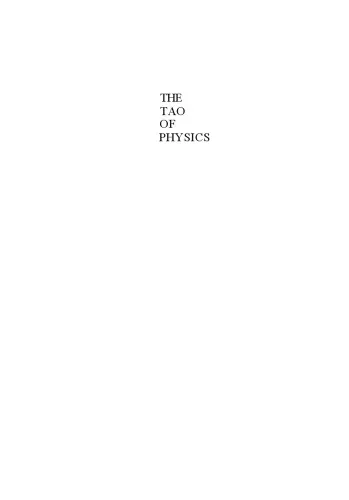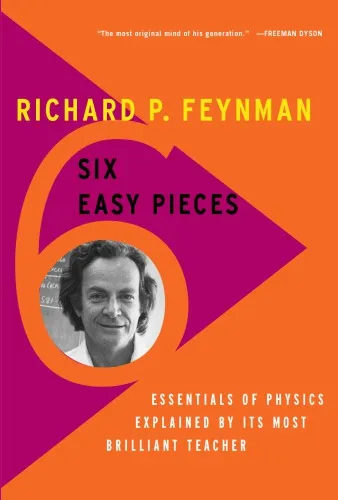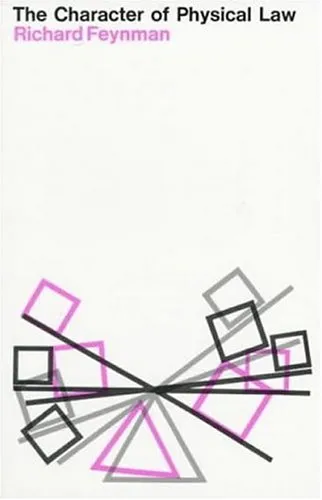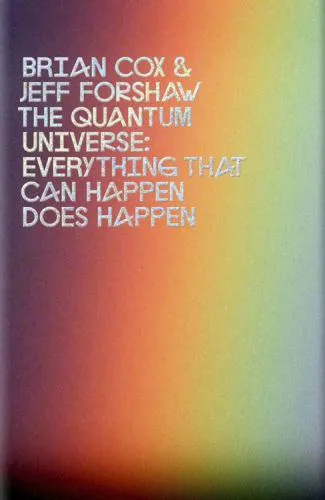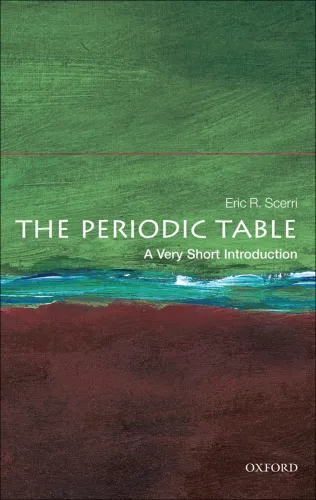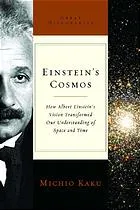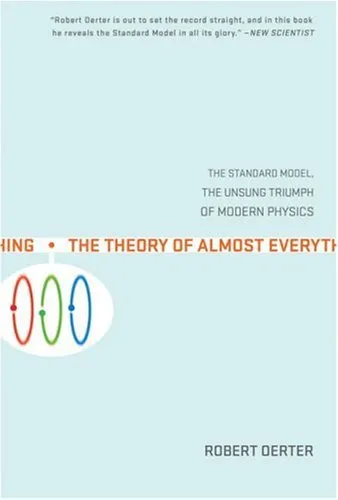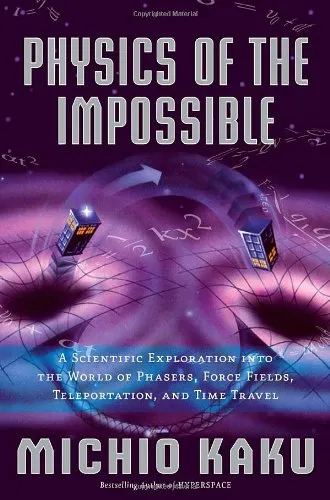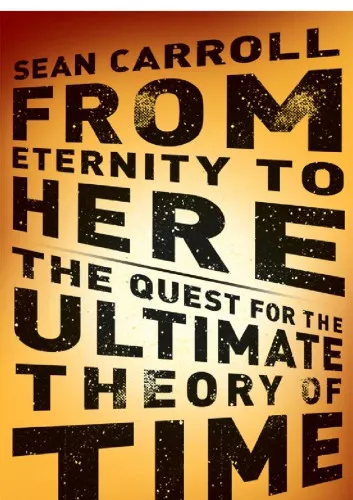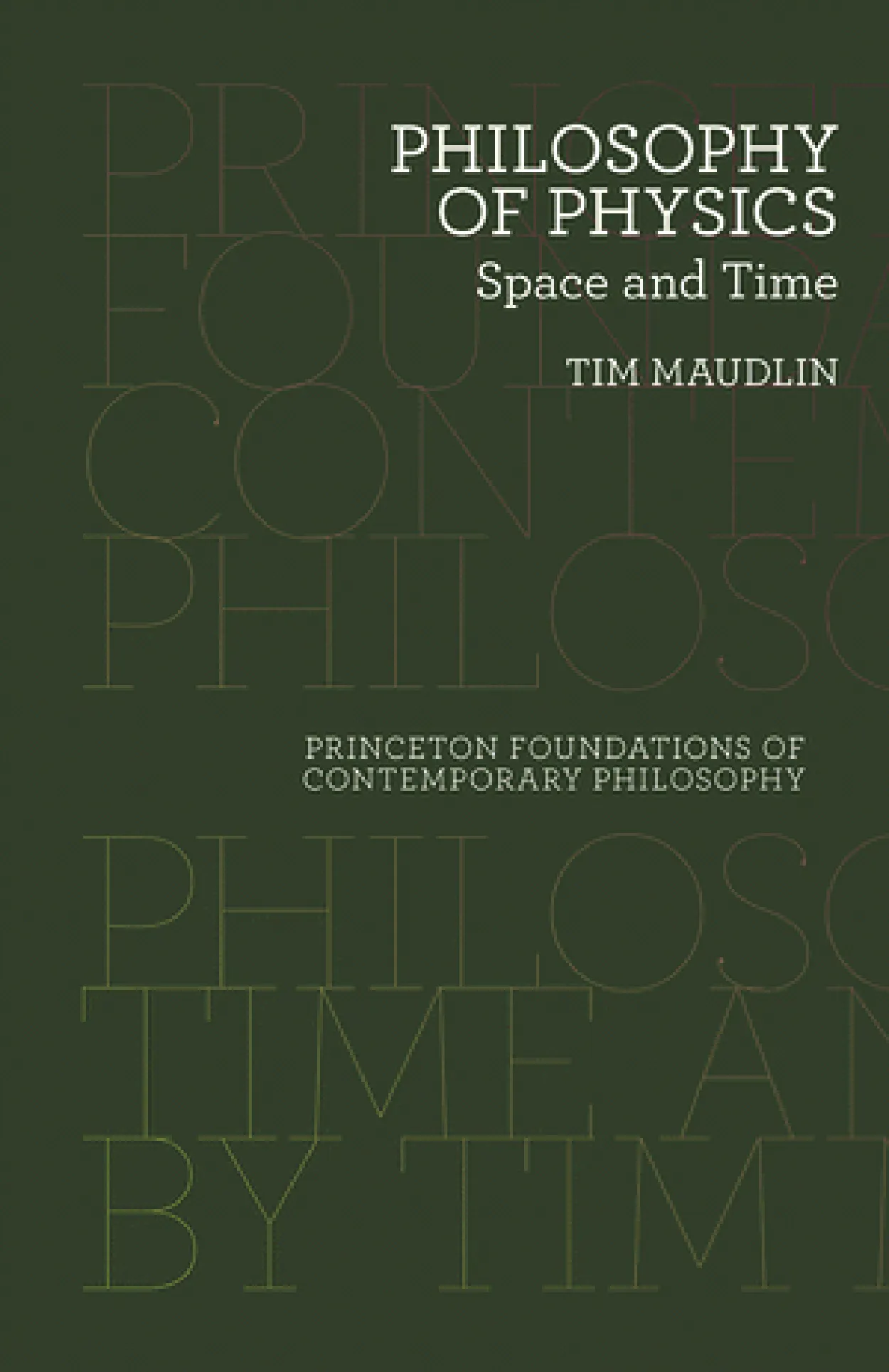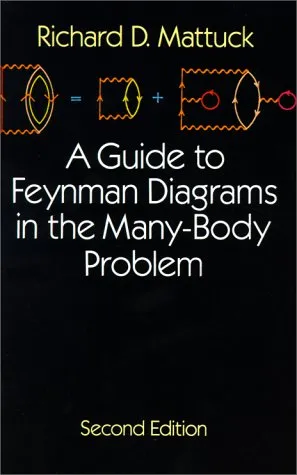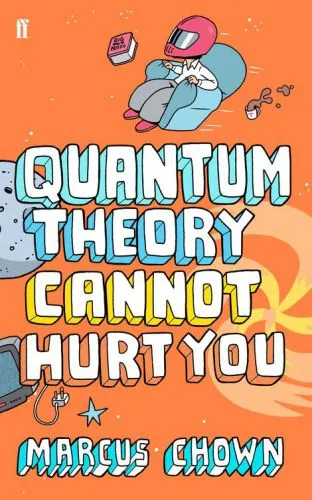The Tao of Physics
4.5
بر اساس نظر کاربران

شما میتونید سوالاتتون در باره کتاب رو از هوش مصنوعیش بعد از ورود بپرسید
هر دانلود یا پرسش از هوش مصنوعی 2 امتیاز لازم دارد، برای بدست آوردن امتیاز رایگان، به صفحه ی راهنمای امتیازات سر بزنید و یک سری کار ارزشمند انجام بدینکتاب های مرتبط:
معرفی کتاب "The Tao of Physics"
کتاب The Tao of Physics نوشته فریتجوف کاپرا یکی از کلاسیکترین آثار در حوزهٔ تلفیق علم و فلسفه است که به تحلیل شباهتهای عمیق میان اصول بنیادین فیزیک مدرن و مفاهیم کلیدی فلسفههای شرقی میپردازد. این اثر در سال 1975 منتشر شد و تأثیر عمیقی بر پارادایمهای فکری و بینرشتهای گذاشت. کتاب نه تنها به درک پایههای علمی از دیدگاه مکانیک کوانتومی و نسبیت میپردازد، بلکه نشان میدهد چگونه این اصول با تعالیم معنوی و فلسفی فرهنگهایی چون تائوئیسم، بودیسم، و هندوئیسم گره خوردهاند.
خلاصهای از کتاب
کاپرا در این کتاب تلاش دارد نشان دهد بین تکنیکهای پیشرفته فیزیک مدرن، مانند مکانیک کوانتومی و فیزیک ذرات، با مغز جامعیت عرفان و معنویت شرقی نظیر مدیتیشن و یوگا، شباهتهای شگفتانگیزی وجود دارد. او تأکید میکند که همان زبان استعاری که فیلسوفان شرقی برای توضیح طبیعت جهان استفاده کردهاند، با آنچه فیزیکدانان برای توصیف رفتار ذرات زیراتمی در آزمایشگاهها به کار میبرند، همسان است. این کتاب به طور ویژه به فلسفههای شرقی مانند تائوئیسم (Taoism)، بودیسم (Buddhism)، و هندوئیسم (Hinduism) و مقایسه آنها با مفاهیمی چون اصل عدم قطعیت هایزنبرگ و دوگانگی موج-ذره میپردازد.
کاپرا معتقد است که علم و معنویت، بهجای اینکه در تضاد با یکدیگر باشند، دو جنبه از یک واقعیت واحد هستند. بررسی مفصل او در کتاب نه تنها این همزیستی را به تصویر میکشد، بلکه مسیری برای همگرایی این دو جهاننگری ارائه میدهد. این کتاب از لحنی ساده و روان استفاده میکند که آن را برای دانشمندان، فیلسوفان، و کسانی که به معنای عمیقتر جهان علاقهمند هستند، دلپذیر میکند.
نکات کلیدی کتاب
- تحلیل شباهتهای میان فیزیک مدرن و فلسفههای شرقی.
- معرفی اصول کلیدی نظریههای فیزیکی مانند نسبیت، مکانیک کوانتومی، و فیزیک ذرات.
- توضیح مباحث مربوط به مفاهیمی چون Dualities و interconnectedness از خلال دیدگاه شرقی و علمی.
- تاکید بر معنای مشترک بین علم و معنویت بهعنوان جنبههای مکمل واقعیت.
- چالش برانگیزی تفکر مکانیکی و خطی غربی و ارائه راهکارهایی برای همگرایی دانش و خرد.
جملات معروف از کتاب
"The dance of subatomic particles is like the dance of Shiva in Indian traditions – a cosmic dance of creation and destruction."
"Science does not need mysticism, and mysticism does not need science; but man needs both."
"The parallels between modern physics and Eastern mysticism are not superficial; they are indeed essential."
چرا این کتاب مهم است؟
کتاب The Tao of Physics یکی از نخستین تلاشها برای ادغام علم و معنویت به شکل مدرن و سیستماتیک است. این اثر نه تنها در فضای آکادمیک تأثیرگذار بوده، بلکه برای عموم علاقهمندان راهنمایی برای درک عمیقتر جهان ارائه میدهد. این کتاب جنبشی در جهت گذر از تفکر دکارتی-نیوتنی به سوی نوعی تفکر سیستمی و کلنگر آغاز کرد و به همین دلیل تأثیری بر انقلاب علمی قرن بیستم داشت.
این کتاب هنوز هم بهعنوان یک مرجع کلیدی برای افرادی که به دنبال پل زدن میان رویکرد علمی غربی و تفکر شهودی شرقی هستند، به شمار میرود. ارزش این اثر در این است که جهان طبیعی را بهعنوان یک کل همگن، یکپارچه و پر رمز و راز توصیف میکند که به هر دوی پژوهش علمی و بینش معنوی نیاز دارد. از این رو، مطالعه این کتاب به هر کسی که علاقهمند به شناخت پیوندهای میان عینیت و عرفان است، پیشنهاد میشود.
Introduction to "The Tao of Physics"
"The Tao of Physics" by Fritjof Capra is a groundbreaking exploration of the intersection between modern physics and ancient spiritual traditions. First published in 1975, this timeless work investigates the parallels between the language and philosophy of Eastern mysticism and the revolutionary discoveries in quantum physics and relativity. A profound and visionary book, it bridges two seemingly disparate realms: science and spirituality, offering readers a holistic understanding of reality.
The book delves into the intricate dance between the scientific quest for understanding the universe and the mystical search for unity and interconnectedness. Capra eloquently shows that, despite their different approaches, both paths lead to the same truths about the nature of reality. "The Tao of Physics" offers a compelling narrative for those who seek to reconcile rational, empirical inquiry with the profound spiritual insights offered by Eastern traditions such as Taoism, Buddhism, and Hinduism.
This monumental work is essential reading for anyone fascinated by the deeper meaning of the universe, as Capra invites us to reconsider our assumptions about science, religion, and the interconnectedness of life. By using a multidisciplinary approach, he not only celebrates the beauty of both worlds but also inspires a new way of thinking about how humanity can grasp its place in the cosmos.
Detailed Summary of the Book
The book begins with an examination of Western scientific paradigms, particularly focusing on the Cartesian worldview and Newtonian mechanics. Capra explains how these frameworks, which dominated science for centuries, gave birth to a mechanistic perception of the universe. However, such views began to fall apart with the advent of 20th-century physics, particularly through quantum theory and Einstein's theory of relativity. These groundbreaking developments radically transformed our understanding of the physical world, challenging ingrained notions of matter, space, and time.
As Capra dives deeper, he draws stunning parallels between the descriptions of the physical universe by modern physicists and the metaphysical concepts described in the spiritual texts of the East. For example, Heisenberg’s uncertainty principle echoes the mystical view that reality is not fixed but fluid, while quantum entanglement reflects the interconnectedness spoken of in Taoist philosophy. Through attention to detail and clarity of thought, the book creates a bridge between these two disciplines, illustrating their shared recognition of unity and oneness.
Furthermore, "The Tao of Physics" introduces the reader to key concepts in both fields. On the scientific side, Capra provides explanations of relativity, wave-particle duality, and quantum field theory. On the spiritual side, he delves into the fundamental teachings of Eastern mysticism, such as the Yin-Yang duality in Taoism and the cyclical nature of existence in Buddhism. By weaving these topics together, the book offers a profound vision of the harmony that exists across these disciplines.
Capra presents not just the theoretical links, but also the philosophical implications of these discoveries for modern humanity. He argues that understanding the interconnectedness between science and spirituality can enable humanity to move beyond destructive materialism into a more balanced way of being.
Key Takeaways
- Modern physics and ancient Eastern philosophies share a surprising congruence in their understanding of the universe.
- The mechanistic, reductionist worldview is incomplete, and a more holistic paradigm is needed to fully understand reality.
- Quantum theory emphasizes interconnectedness, complementing mystical teachings about the unity of all things.
- Human thought processes and our separation of "matter" and "spirituality" limit our understanding of the cosmos.
- Revisiting ancient wisdom can inspire a more integrated approach to solving modern environmental and societal crises.
Famous Quotes from the Book
"What we observe is not nature itself, but nature exposed to our method of questioning."
“Science does not need mysticism, and mysticism does not need science, but man needs both.”
"The more we penetrate into the microcosm, the more our picture of the physical world changes.”
Why This Book Matters
"The Tao of Physics" is not just a book about science or spirituality; it’s about reshaping the way we view reality. At its heart, it challenges the dogma of separation—between science and spirituality, between matter and consciousness, and even between human beings and the natural world. In an era rife with conflict, environmental degradation, and spiritual disillusionment, Capra's work encourages harmony and interconnectedness.
The book's relevance continues to grow as society becomes increasingly aware of the limitations of mechanistic thinking in addressing modern challenges. "The Tao of Physics" introduces readers to a paradigm that is as ancient as it is futuristic, reminding us that wisdom often lies in synthesizing perspectives rather than polarizing them. It is a work of extraordinary insight that speaks to scientists, philosophers, and spiritual seekers alike.
دانلود رایگان مستقیم
شما میتونید سوالاتتون در باره کتاب رو از هوش مصنوعیش بعد از ورود بپرسید
دسترسی به کتابها از طریق پلتفرمهای قانونی و کتابخانههای عمومی نه تنها از حقوق نویسندگان و ناشران حمایت میکند، بلکه به پایداری فرهنگ کتابخوانی نیز کمک میرساند. پیش از دانلود، لحظهای به بررسی این گزینهها فکر کنید.
این کتاب رو در پلتفرم های دیگه ببینید
WorldCat به شما کمک میکنه تا کتاب ها رو در کتابخانه های سراسر دنیا پیدا کنید
امتیازها، نظرات تخصصی و صحبت ها درباره کتاب را در Goodreads ببینید
کتابهای کمیاب یا دست دوم را در AbeBooks پیدا کنید و بخرید
2042
بازدید4.5
امتیاز0
نظر98%
رضایتنظرات:
4.5
بر اساس 0 نظر کاربران
Questions & Answers
Ask questions about this book or help others by answering
No questions yet. Be the first to ask!
